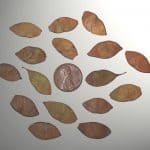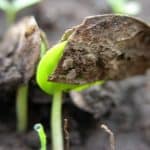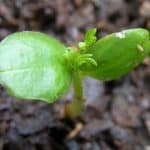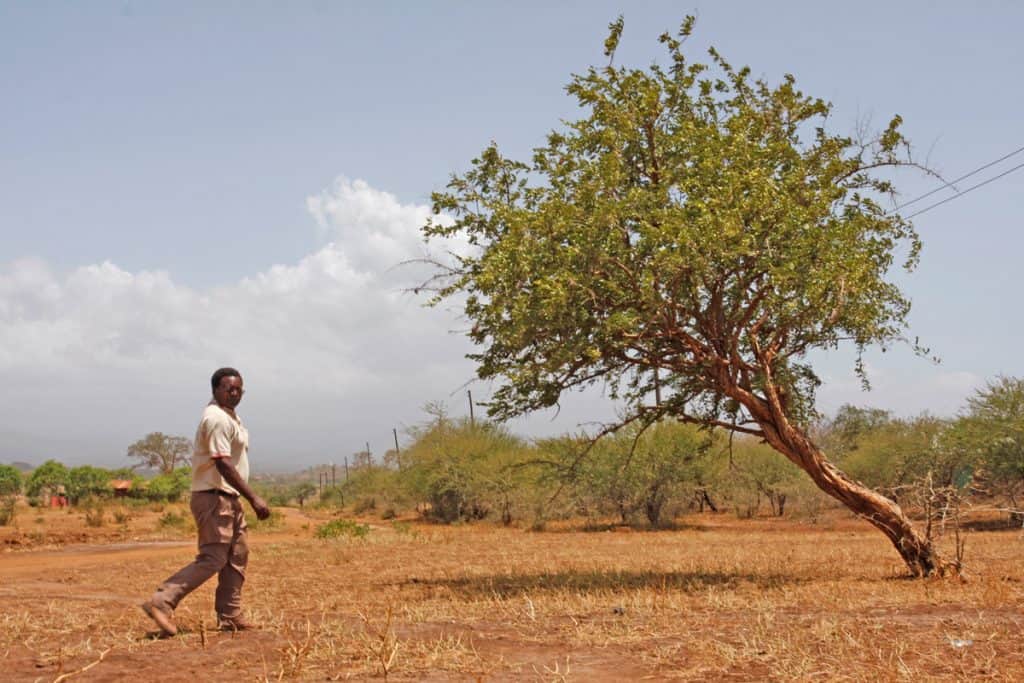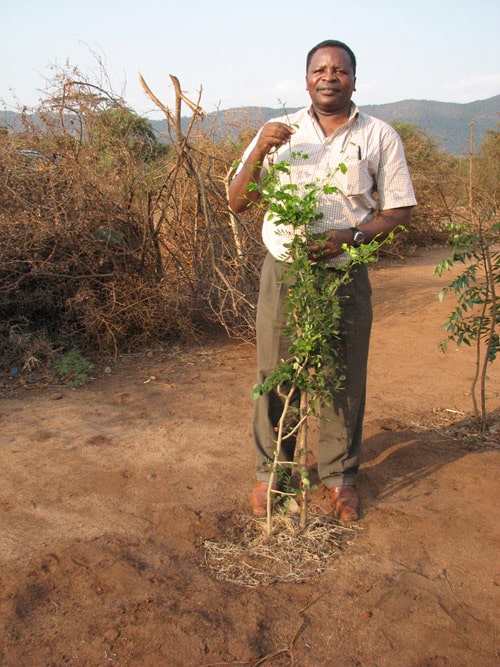The Tree
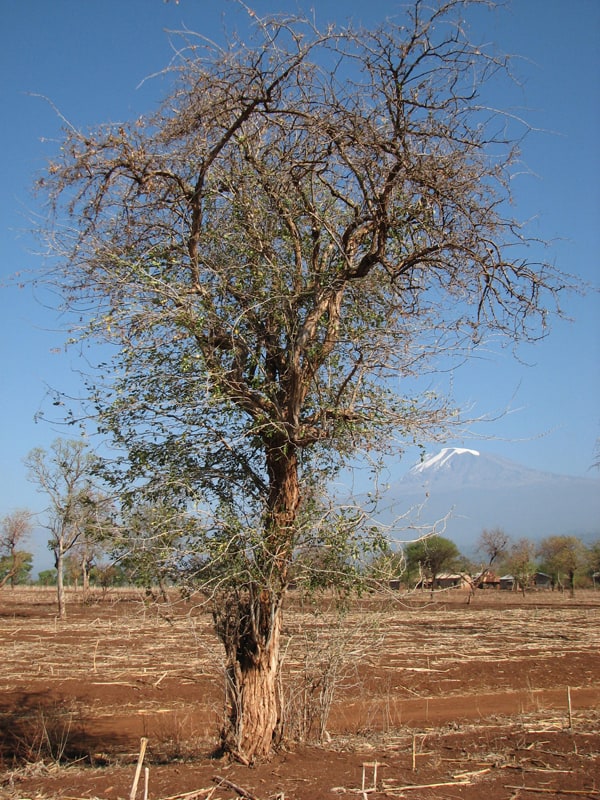
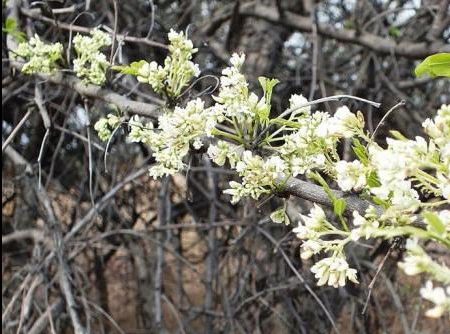
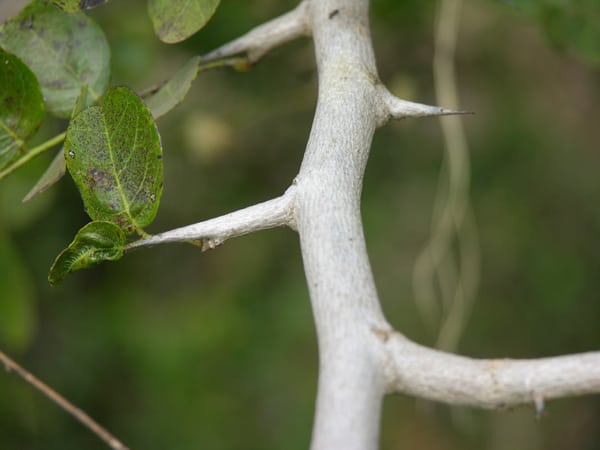
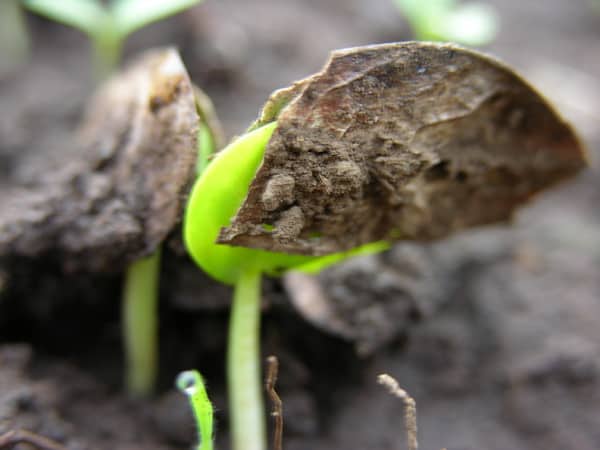
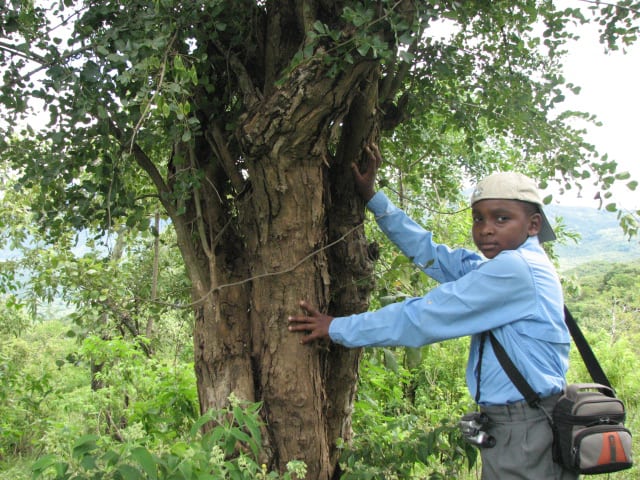
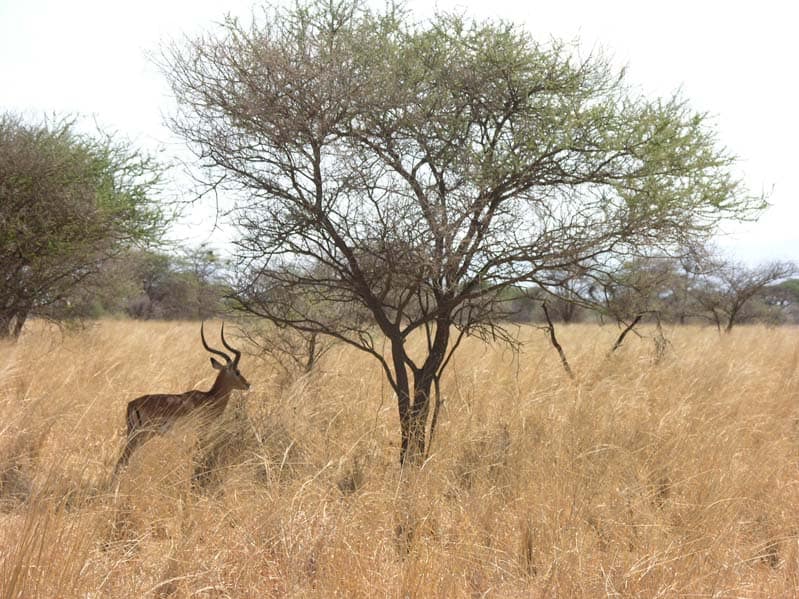
The Tree
On this page can be found general background information about Dalbergia melanoxylon – its habitat, growth and distribution. Also included below are links to published laboratory experiments conducted to ascertain seed viability, requirements for growth and best practices for propagation of the species. Additional information about the tree can be found in the three sections listed below. For an examination about uses of the wood in modern times, see Art & Music.
About the Wood
Contains photographs of milled blackwood, high resolution images of its anatomical cross-sections and a list of urls to access additional information about the resource.
5,000 Year History
Compilation of information from historical sources tracing the use and trade of mpingo from Egyptian times to the present, offering a rationale for its present conservation status.
Conservation Status
Overview of the current conservation status of Dalbergia melanoxylon. Sources include published documents by CITES and other oversight and regulatory agencies.
Information About The African Blackwood Tree
The Ebony of Antiquity – The African blackwood tree is a member of the rosewood family, with taxonomic classification in the family Leguminosae, genus Dalbergia, species melanoxylon. Its species name refers to the dark color of its heartwood and is derived from the Greek mela, or melanos, which means black. The Swahili language used in Tanzania gives it the name mpingo, while in Portuguese it is called Pau preto, and a trade name of Zebrawood is also sometimes used. It has numerous African names: Mugembe, Poyi, Endisika, Kidamo, Kinti, Masojanda, Mgembya, Mhembote, Mhingo, Minday, Mupako, Mwajinde, Ngembi, Nyamfunga, Oitlaska, Q’oya and Tamumo mhembete.
Historically, mpingo is the African ebony of antiquity, referred to in records dating to Egyptian times. The word ebony is a derivation of the Egyptian term hbny. However in today’s terminology the name ‘ebony’ is used for a number of different species, most commonly Diosporos crassiflora (Gabon ebony), which also has black heartwood, but is more brittle, less lustrous and lacks many of mpingo’s other superb woodworking characteristics. Other species with a dark heartwood which are referred to as ebony are East Indian ebony (Diospyros ebenum), Macassar ebony (Diospyros celebica), and Malaysian blackwood (Diospyros ebonasea), while still others that are hard, but have variegated color can also be called ebony because the use of this name enhances a timber’s commercial value. This accounts for the confusion associated with the name ebony being applied at different times to entirely separate species.
African blackwood is also referred to as Grenadilla in the woodwind instrument trade, although this Spanish name originally referred to Cocuswood from the Caribbean, which was a favored wood for European wind instruments until about 1900. After cocuswood was effectively logged out as a commercial species, the alternative found to replace it was African Blackwood – Dalbergia melanoxylon.
Robert Lamb, who was a consultant on the “Tree of Music” video and appeared in the documentary, writes about this confusion between ebony and African blackwood, “A sunken vessel was found somewhere in the Eastern Mediterranean with a cargo of (among other things) wooden billets that were analysed as blackwood. The key thing is that the cargo manifest was also found with the vessel carved on a clay tablet in Egyptian hieroglyphics, listing ebony as part of the cargo. The hieroglyphics transliterate as HBNI and the etymology of “ebony” is from Egyptian via Greek, so this is fairly solid evidence I think.
“Foresters will get hot under the collar if you tell them this, as the ebony of the furniture inlay trade in Europe was undeniably the South Asian tree Diospyros melanoxylon but this was assigned the name later to add value. There was little or no sea trade between South Asia and ancient Egypt but plenty with Nubia (latter day Sudan) where Dalbergia was common in early historic time but was presumably logged out for the wood. Tomb artifacts from pyramid burials are mpingo in every case I’ve heard of where they checked this out with spectography.” (These ideas are discussed at length in the section a “5,000 Year History of Dalbergia Melanoxylon“.)
Growth – The trees have a scruffy appearance and are frequently multi-stemmed and extensively branched. They grow very slowly and often in very gnarled and twisted shapes. Their boles are very often highly buttressed or fluted so the full diameter of the log is not available for use due to the deep intrusions of bark and sapwood that often occur. Photographs of end cuts of Dalbergia melanoxylon are notable because of the stark black color of the heartwood which is ringed by these irregular, sometimes petal-shaped buttress protrusions, all outlined in creamy-colored sapwood. Harvestable size is not reached until an estimated 70 to 100 years. Mature trees are typically between 4.5m and 7.5m high and rarely exceed 0.3 m. (1 foot) in diameter. In some tree databases tree size listings for African blackwood are often inaccurate, claiming 2 to 3 feet in diameter as normal. Only the rare tree in a highly protected environment has been found to be this large. As larger specimens have been harvested, the average available tree size has diminished over the decades of its use. The yellowish-brown bark on the main stem flakes off in long strips, and its smaller branches bear sharp spines 2-3 cm in length. The tree is semi-deciduous, losing many of its leaves over the dry season in common with most trees of its habitat. The flowers are small, white, sweetly scented and grow in tight clusters. They develop into greyish, papery pods each containing one or two seeds which are wind dispersed.
Habitat – Mpingo grows in an ecoregion of Africa called the miombo woodlands, which stretch across the continent from Angola in the west to Tanzania in the east. These woodlands are dominated by three primary species of the subfamily Caesalpinioideae which rarely grow in other habitats, namely Brachystegia, Julbernardia and Isoberlinia. Climatically the habitat varies from humid to semi-arid and tropical to subtropical or even temperate. Its soils are nutrient-poor, and vegetation can be sparse due to its long dry season. Nevertheless, these woodlands are vital to birds and animal species as well as to the livelihoods of many rural people, who depend on them for timber, fuelwood, fruit, honey and fodder for livestock. Because of its adjustment to this challenging habitat, Dalbergia melanoxylon has acquired adaptive characteristics like fire-resistance and incremental growth. Its incremental yearly addition of heartwood is one reason for its notable density. The heartwood of the tree at 12% moisture content has a density of 1230-1330 kg/m3, as compared to water with a density of 997 kg/m3. A blackwood log will not float in water.
Seedlings need to be carefully weeded because they do not successfully compete with other plants. It is known to grow in rocky soils where other plants cannot take hold. During its early years it develops an extensive system of roots to sustain its life during the long months of the African dry season. Its leaves provide fodder for the great migrating herds along the Serengeti plain; its roots have a nitrogen-fixing effect and so serve to increase the soil’s fertility. The more mature trees have the ability to survive the sweeping grass fires of the miombo woodlands when they are not too intense, but mpingo seedlings are highly vulnerable.
Distribution – The woodlands which once stretched from Senegal to Ethiopia and south to South Africa have suffered considerable decline due to population increase, overharvesting and poor management. Consequently, although mpingo is noted as growing in numerous countries, now the main stands of African blackwood occur in southeastern Tanzania and northern Mozambique. Most blackwood is harvested from these two countries. Other countries in which it has been noted, but is not commercially viable are Angola, Botswana, Ethiopia, Kenya, Malawi, South Africa, Sudan, Uganda, Zambia and Zimbabwe, and to a lesser extent, in the Central African Republic, Chad, Cote d’Ivoire, Burkina Faso, Nigeria, Senegal and Zaire. For information on the current conservation status of the tree, see “Conservation Status of Dalbergia melanoxylon in the 21st Century.”
Medicinal Uses – Dalbergia melanoxylon is well known throughout eastern Africa as a medicinal tree, usage being made of its bark, leaves and roots, and it is found in many listings of African medicinal plants. Since there is such widespread use of native plants for healing in Africa, the loss of habitat for the mpingo tree has significant detriments for the people, because such plants are regarded as ‘irreplaceable’ species.
These are some of mpingo’s medical usages: 1) Root decoction: treatment of abdominal pain, hernia and gonorrhea. Also used for abortion and as an anthelmintic (for intestinal parasites). 2) Smoke of the burning root is used for headache, rhinitis and bronchitis. 3) The bark is an antidiuretic. 4) The leaves are used for throat inflammations, heat problems, syphilis, gonorrhea, and dysentery. 5) Use of heartwood: use a sharp knife to scrape the heartwood and mix the shavings with skin lotion or oil to treat skin diseases.
Its leaves can be mixed into a goat soup that is said to be efficacious for the relief of backache and joint pain. In Kenya the tree has become over-exploited for its use in curing coughs and stomach pain. For centuries the Venda people of South Africa have used the bark as an anti-bacterial. In 1993 a revue in the Journal of Ethno-pharmacology reported on scientific tests carried out at the Department of Pharmacy at the University of Zimbabwe verifying this use, determining the existence of anti-microbial activity relating to use of the bark of Dalbergia melanoxylon. Several more recent studies have verified this use.
Mpingo is also important in cultural and ceremonial practices, including bathing a newborn infant in a concoction made from the tree’s pounded leaves mixed with water to ensure that the baby grows strong. The Chagga people of Kilimanjaro have a traditional belief that if you have a piece of mpingo wood in your house, it will bring peace and everybody in the family will be happy with one another.
Scientific Experimental Studies on African Blackwood
• Amri, E., 2015. Influence of Arbuscular Mycorrhizal Fungi on Rooting Ability of Auxin Treated Stem Cuttings of Dalbergia melanoxylon.
• Amri, E.; Juma S., 2016. Evaluation of Antimicrobial Activity and Qualitative Phytochemical Screening of Solvent Extracts of Dalbergia Melanoxylon.
• Amri, E.; Kanyeka, Z.L.; Lyaruu, H.V.M.; Nyomora, A.S., 2009. Evaluation of Genetic Diversity in Dalbergia Melanoxylon Populations Using Random Amplified Polymorphic DNA Markers.
• Idrees, B.S.M.; Mohammed, S.M., 2014. Physiological Characteristics of Dalbergia melanoxylon and Dalbergia sissoo seeds.
• Kiondo, F.; Feyissa, T.; Ndakidemi, P.; Seth, M., 2014. In Vitro Propagation of Dalbergia melanoxylon: A Multipurpose Tree.
• Kiondo, F.; Feyissa, T.; Ndakidemi, P.A.; Seth, M.; Lema, K., 2014. Micropropagation of Dalbergia melanoxylon: A Threatened Tree Species.
• Malimbwi, R.E.; Luoga, E.J.; Hofstad, O.; Mugasha, A.G.; Valen, J.S., 2000. Prevalence and Standing Volume of Dalbergia melanoxylon in Coastal and Inland Sites of Southern Tanzania.
• Musimba, N., Kimatu, J.N., Mweu, B., Mburu, M.W.K., Nguluu, S., 2015. Germination Effects of Purposive Bruchid Screening of African Ebony (Dalbergia Melanoxylon) Seeds in the Arid and Semi-Arid Region of South Eastern Kenya.
• Mutai, P.; Heydenreich, M.; Thoithi, G.; Mugambate, G.; Chibale, K., Yenesew, A., 2013. 3-Hydroxyisoflavanones from the stem bark of Dalbergia melanoxylon: Isolation, antimycobacterial evaluation and molecular docking studies.
• Swetha, U., 2017. Antioxidant Activity of Dalbergia melanoxylon Bark Extract.
• Washa, W.B., 2015. Potential of the Dark as a Factor affecting Seed Germination.
• Washa, W.B., 2014. A Review of the Literature of Dalbergia melanoxylon.
• Washa, W.B., 2015. Effect of Stele type in the growth rotation of Dalbergia melanoxylon.
• Washa, W.B., 2014. Effective Cutting type in the Rooting of Dalbergia melanoxylon in Tanzania.
• Washa, W.B.; Nymora, A.M.S.; Lyaruu, H.V.M., 2012. Improving Propagation Success of Dalbergia melanoxylon (African Blackwood) in Tanzania (I): Characterization of Mycorrhiza Associated with D. melanoxylon in Tanzania.
• Washa, W.B.; Nymora, A.M.S.; Lyaruu, H.V.M., 2012. Improving Propagation Success of Dalbergia melanoxylon (African Blackwood) in Tanzania (II): Rooting Ability of Stem and Root Cuttings of Dalbergia melanoxylon in Response to Rooting Media Sterilization in Tanzania.
• Washa, W.B., 2014. Mycorrhiza classes in the African Blackwood. A case of Babati, Kilosa and Kilwa district in Tanzania.
• Washa, W.B.; Nyomora, A.M.S., 2014. Advances in D. melanoxylon Investigations towards Tissue Culture: Problems and Limitations.
• Washa, W.B.; Nyomora, A.M.S. The Effect of Moisture and Seed Treatment on the In-Situ and Ex-Situ Regeneration of Dalbergia melanoxylon (African Blackwood) in Pugu Forest Reserve.
Sebastian Chuwa and Mpingo Tree near Moshi, Tanzania.
Information and Conservation of the Mpingo Tree in Tanzania
By Sebastian M. M. Chuwa (1995)
The mpingo (African Ebony) produces heartwood with properties making it eminently suitable for the manufacture of traditional carvings and musical instruments. Since it is a very hardy tree often growing in situations where productive agriculture is rendered impossible by shallow and rocky soil, it offers a way to obtain some revenues from otherwise useless sites and it has potential as a foreign exchange earner.
It is a much-branched, many-stemmed, spiny, deciduous tree losing its foliage in the dry season, or shrub of dry woodland and savannah that grows up to 10-15 m tall. The leaves are pinnate with 3-5 leaflets, the flowers are white and sweetly-scented and the fruits are a blunt pinnate pod with 1-4 seeds. Flowering takes place in the second dry season, covering most of the branches when the tree is leafless. Pods mature about 7 months after flowering. The trunk or bark is pale grey to pale brown and the bole is often deeply fluted but usually under 1.5 m long to the first major branch, and under 30 cm in diameter and often finely scored in the wild. It commonly has more than one stem. Large trees may have low buttresses. Especially on the branches and on the boles of younger trees there are scattered straight, conical, pale-colored spines which often bear leaves and flowers. In older trees there are irregular flaky patches. It is a heavily branched tree and the crown is usually rather irregular and rather open though in well-developed individuals it is more rounded and heavier.
DISTRIBUTION
The mpingo grows from Transvaal in South Africa to Senegal in Western Africa north of Ethiopia, Angola and in western India. The Africa range is extensive mainly in Tanzania and the quantities widespread in the protected areas like Tarangire National Park, Mikumi National Park, Selous Game Reserve, Pugu and Kazimzumbwi Forest Reserve in Coastal forests. There are low quantities in the northern part of Tanzania, e.g. along the Great Rift Valley (Lake Eyasi) and Kilimanjaro.
ENVIRONMENTAL REQUIREMENTS
The association of mpingo with tropical lowlands subject to a seasonal climate indicates it is favored by a high mean temperature over 20° C with considerable difference between the extreme values. Many of Tanzanian localities for mpingo receive mean rainfall in the range of 600-800 mm (24-32 in). Mpingo exists in various adverse sites and its association with these reflects its own hardiness, but it seems unable to compete effectively with other species where conditions are better. The attention has been drawn to the better development of trees in fairly fertile situations such as termite mounds and moist deep soils near water-courses. This suggests that the species displays tolerance of poor conditions more than adaptation to them.
GROWTH AND YIELDS
The results of my observation show that the growth rate for planted trees is high. In the first five years well-tended trees increase in height by about 0.3-1 m. a year, and in diameter by 1.5-2 cm. a year. In the wild for the first 5-8 years, they increase in height by about 0.5-0.7 m. a year and diameter by 1-1.4 cm a year.
AFORESTATION PRACTICE
Mpingo seed germinates readily and can be used to raise the tree. Seeds can be stored but viability is retained for only one year. There are 40,000-45,000 seeds in one Kg. Seedlings grow well in clean, weeded conditions. The first germination in seedbed or direct in seedpots with watering starts in about 11 days; then they can be transplanted to seedling pots in about 4-5 weeks. Planting after 6-7 months in the rainy season gives better results than later planting.
COMMERCIAL INTEREST
Traditionally the wood has been used for hoes, fuel, charcoal, pestles, combs, cups and knife handles. Because of its high density, its fine texture and waxiness, it is ideal for the production of woodwind musical instruments like clarinets, as it can hold the metal fittings and does not absorb water, in addition to having a good tone and looking attractive. It is also used for piano keys and the fret boards of guitars. Other uses include the manufacture of bearing slides, abacus parts, chessmen, paper knives and for marquetry. Because of the relative rarity of high quality pieces mpingo wood commands a high price. Sawn logs currently sell at US $ 9,000 per cubic meter while processed timber for clarinets fetches up to US $ 13,000 per cubic meter. The Tanzania woodcarvers (the Makonde tribe) living in the southeast of the country produce a wide range of objects for the tourist markets from candlesticks to decorative combs and religious statues. In Tanzania, there has been some concern expressed about the conservation of mpingo. It is not a threatened species as it is so widespread and grows in protected areas. (Note: Article written in 1995.) Because of demand for the mpingo trees there will be shortages of export quality wood. Coppicing power is reduced by the time trees reach the sizes prescribed for exploitation, though younger plants coppice more successfully. Clearance by cutting of land with abundant mpingo is followed by the appearance of numerous coppice shoots, root suckers and seedlings in the following rainy season. In the natural state in early years mpingo passes through a suffrutex phase when for several years the shoots produced are not perennial. While this reflects the plants’ adaptation to withstand fire, it is not a desirable attribute if the shortest possible exploitation cycle is to be adopted.
Recommendations: Mpingo is a good tree in Tanzania for planting in the coastal and interior lowland zones from 0-3500 ft. above sea level, with individual trees to be harvested as appropriate. It is recommended to plant trees in numbers, and mix with some faster growing species which do not create too heavy a shade. Mpingo grows in full light under natural circumstances. Education provided to farmers and our youths about this important species is very much needed.


